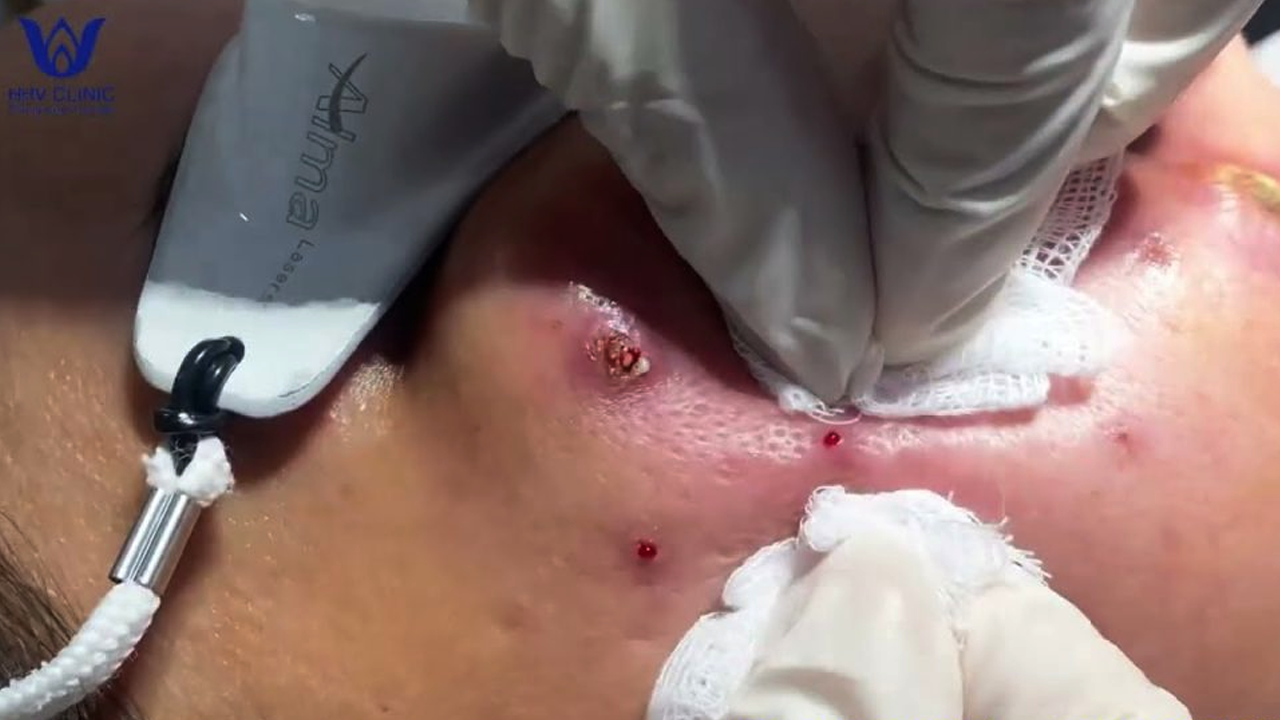Removing an abscess typically involves draining the pus that has built up due to an infection. The method of removal depends on the size, location, and severity of the abscess. Here’s a general overview of how it’s done:
✅ 1. Medical Evaluation
A doctor will assess the abscess to determine if it needs to be drained. Small abscesses may resolve with antibiotics alone, but larger ones usually need drainage.
✅ 2. Drainage Procedure (Incision and Drainage – I&D)
This is the most common and effective treatment.
Steps:
-
Local anesthesia is applied to numb the area.
-
A small incision is made with a scalpel to open the abscess.
-
Pus is drained out completely.
-
The cavity may be:
-
Left open to heal from the inside out (with or without packing).
-
Lightly packed with sterile gauze to keep it open and absorb drainage.
-
-
The area is cleaned and bandaged.
✅ 3. Aftercare
-
Keep the area clean and dry.
-
Change dressings as instructed.
-
Take prescribed antibiotics, if necessary.
-
Follow up with your doctor to ensure proper healing.
⚠️ When to See a Doctor
-
The abscess is painful, large, or growing.
-
There’s fever, red streaks, or spreading redness.
-
It’s located near sensitive areas (face, groin, spine).
-
You have a weakened immune system or diabetes.
🩺 Step-by-Step Guide to Abscess Incision and Drainage (I&D)
1. Preparation and Anesthesia
-
Sterilization: The skin over and around the abscess is cleaned with antiseptic solutions like povidone-iodine or chlorhexidine.
-
Anesthesia: A local anesthetic, such as 1% lidocaine, is administered via infiltration or field block to numb the area. It’s crucial to avoid injecting the anesthetic directly into the abscess cavity to prevent increased pain and tissue distention .
2. Incision
-
Scalpel Use: A #11 or #15 scalpel blade is employed to make a linear incision along the abscess’s length, typically at the point of maximum fluctuation. The incision should be sufficiently wide to allow complete drainage .
3. Drainage and Debridement
-
Draining Pus: The abscess cavity is gently expressed to evacuate pus.
-
Breaking Loculations: If the pus is compartmentalized (loculated), a curved hemostat or similar instrument is used to break up these compartments, ensuring thorough drainage .
4. Irrigation
-
Cavity Cleaning: The abscess cavity is irrigated with sterile saline or normal saline to remove residual pus and debris. This step is essential for reducing the risk of infection and promoting healing .
5. Packing (if necessary)
-
Indications for Packing: For larger abscesses or those with deep cavities, packing with sterile gauze or iodoform gauze may be necessary. Packing helps prevent the wound from closing prematurely, which could lead to reaccumulation of pus. A small tail of the packing is left outside the wound to facilitate removal .
6. Dressing and Aftercare
-
Dressing: The wound is covered with sterile gauze and secured with tape or a bandage.
-
Aftercare Instructions: Patients are advised on proper wound care, including keeping the area clean and dry, and are scheduled for follow-up visits to monitor healing and remove packing if placed.
📌 Important Considerations
-
Antibiotic Use: Antibiotics are prescribed based on culture results or if there’s evidence of systemic infection.
-
Avoiding Home Drainage: Attempting to drain an abscess at home can lead to complications such as spreading the infection, worsening the abscess, or causing scarring.
-
Follow-Up Care: Regular follow-up is crucial to ensure proper healing and to address any complications promptly.
🔍 References
-
Incision and Drainage of Abscesses: Detailed procedural guidelines can be found in the 5MinuteConsult resource .
-
Clinical Pathway for Abscess Management: The Children’s Hospital of Philadelphia provides a comprehensive clinical pathway for abscess management, including I&D procedures .
-
Medical Review on Abscess I&D: StatPearls offers an in-depth review of the indications, technique, and considerations for abscess incision and drainage .
